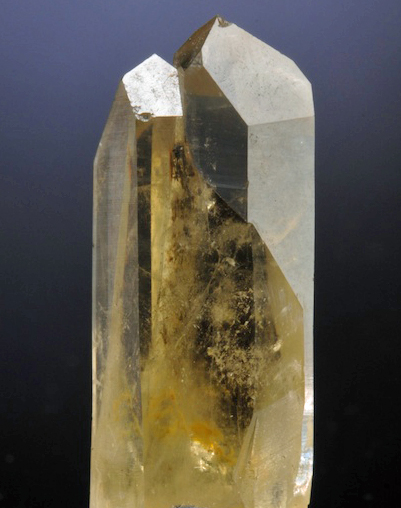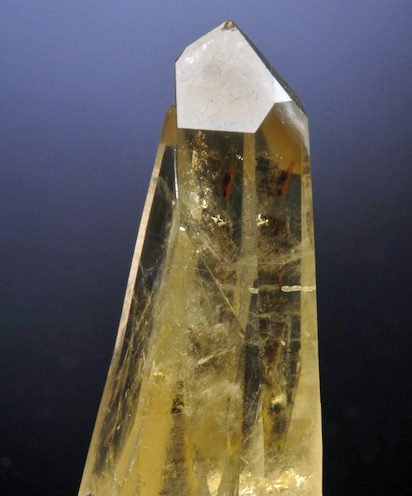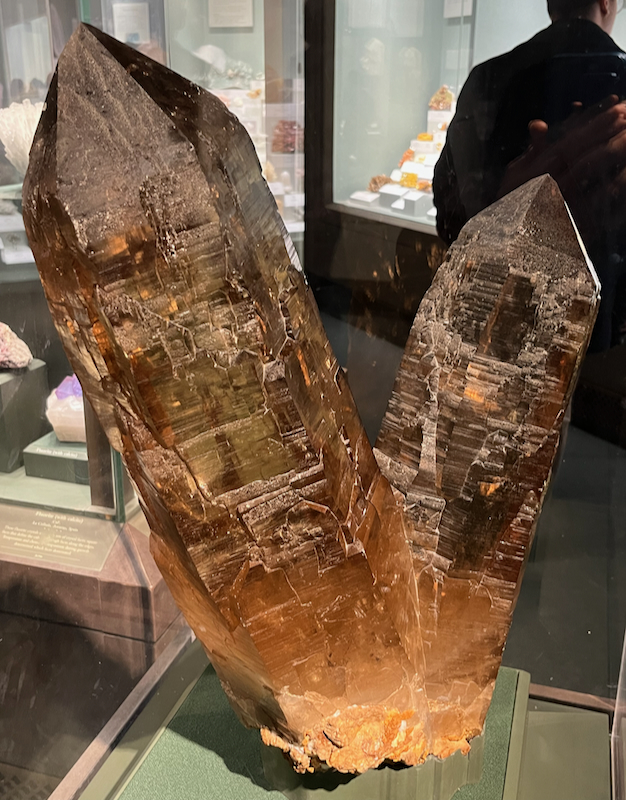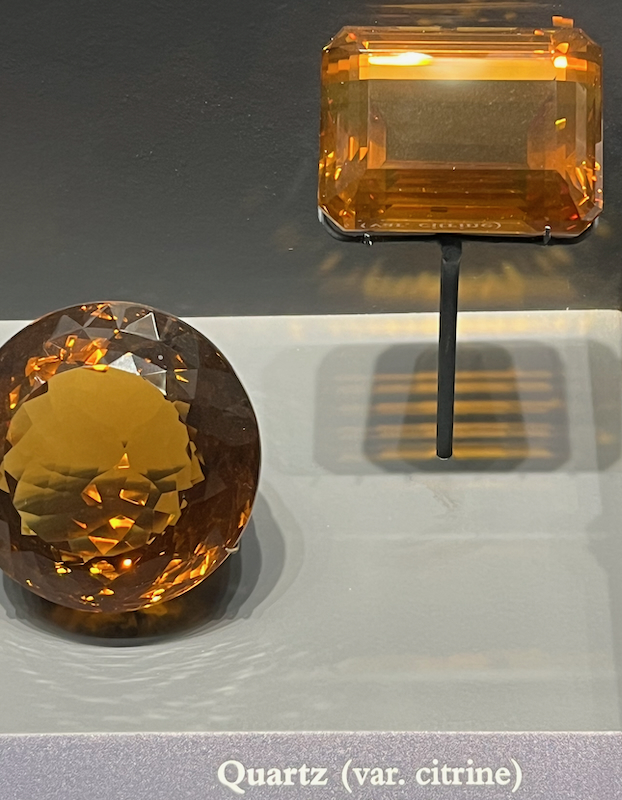Citrine
Quartz is responsible for the existence of several different clear gemstones, with citrine, yellow quartz, being the least commonly naturally occurring. When it does occur, a tiny amount of a specific type of iron inside the crystal turns it yellow. If you’re out rockhounding and you find some quartz crystals that look yellowish, usually it’s because they’re dirty, stained by something organic, or have a thin coating of rust on the outside—they’re not citrine. If you’re shopping at a rock show or a bead store and you find crystals labeled “citrine,” there’s a good chance they’re actually amethyst or smoky quartz crystals that were heated up until the color changed to yellow. A piece of real, natural citrine is a special thing. Another kind of quartz crystal you might find for sale is called “ametrine” because part of it is amethyst and part of it is (real or fake) citrine.
| Formula | Group or Type | Shape | Hardness | Specific Gravity | Streak | Luster |
|---|---|---|---|---|---|---|
| SiO2 | Quartz | Hexagonal | 7 | 2.6–2.7 | White | Vitreous |




